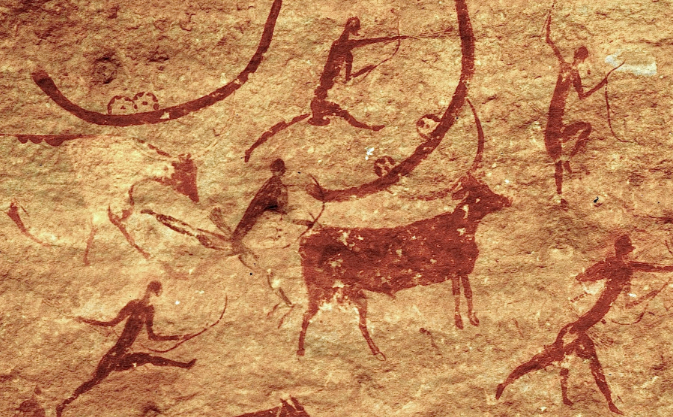Why hunter-gatherers moved from place to place?
- If they had stayed at one place for a long time, they would have eaten up all the available plant and animal resources. Therefore, they would have had to go elsewhere in search of food.
- Animals move from place to place either in search of smaller prey or grass and leaves. That is why those who hunted them had to follow their movements.
- Plants and trees bear fruit in different seasons. So, people may have moved from season to season in search of different kinds of plants.
- People, plants and animals need water to survive which is found in lakes, streams and rivers. While many rivers and lakes are perennial others are seasonal. People living on their banks would have had to go in search of water during the dry seasons.
- People might have also travelled to meet their friends and relatives.
How do we know about these people?
- Archaeologists have found tools of stone, wood and bone, of which stone tools have survived best.
Choosing a place to live in
- Archaeologists have found evidence of hunter-gatherers from many sites located near sources of water.
- As stone tools were important, people tried to find places where good quality stone was easily available.
- Places where stone was found and where people made tools are known as factory sites.
- Sometimes, people lived here for longer spells of time. These sites are called habitation-cum-factory sites.
- Some sites, known as habitation sites, are places where people lived. These include caves and rock shelters. People chose these natural caves because they provided shelter from the rain, heat and wind. Natural caves and rock shelters are found in the Vindhyas and the Deccan plateau. These rock shelters are close to the Narmada valley.
What are sites?
- Sites are places where the remains of things (tools, pots, buildings etc.) were found.
- These were made, used and left behind by the people.
- They may be found on the surface of the earth, buried under the earth, or sometimes even under water.
Making stone tools
Stone tools were probably made using two different techniques:
- Stone on stone – Here, the pebble from which the tool was to be made (aka the core) was held in one hand. Another stone, which was used as a hammer was held in the other hand. The second one was used to strike off flakes from the first, till the required shape was obtained.
- Pressure Flaking – Here the core was placed on a firm surface. The hammer stone was used on a piece of bone or stone that was placed on the core, to remove flakes that could be shaped into tools.
Finding out about fire
- Traces of ash have been found in the Kurnool caves (Andhra Pradesh).
- This suggests that people were familiar with the use of fire.
- Fire could have been used as a source of light, to cook meat and to scare away animals.
Periods
- The Palaeolithic Period extends from 2 million years ago to about 12,000 years ago.
- It is divided into Lower, Middle and Upper palaeolithic.
- This long span of time covers 99% of human history. The name points to the importance of finds of stone tools.
- Ostriches were found in India during this period. Large quantities of ostrich egg shells were found in Patne, Maharashtra.
- The period when we find environmental changes, beginning about 12,000 years ago till about 10,000 years ago is called the Mesolithic (Middle Stone) Period. Stone tools found during this period are generally tiny, and are called Microliths. Microliths were probably stuck onto handles of bone or wood to make tools such as saws and sickles. At the same time, older varieties of tools continued to be in use.
- The next stage from about 10,000 years ago, is known as the Neolithic.
A changing environment
- Around 12,000 years ago, there were major changes in the climate of the world, with a shift to relatively warm conditions.
- In many areas, this led to the development of grasslands, which in turn led to an increase in the number of animals that survived on grass.
- Hunters now started following them, learning about their food habits and their breeding seasons.
- It is likely that this helped them to start thinking about herding and rearing these animals themselves.
- Fishing also became important.
- Several grain bearing grasses grew naturally in different parts of the subcontinent.
- People probably collected these grains as food, and learnt where they grew, and when they ripened.











